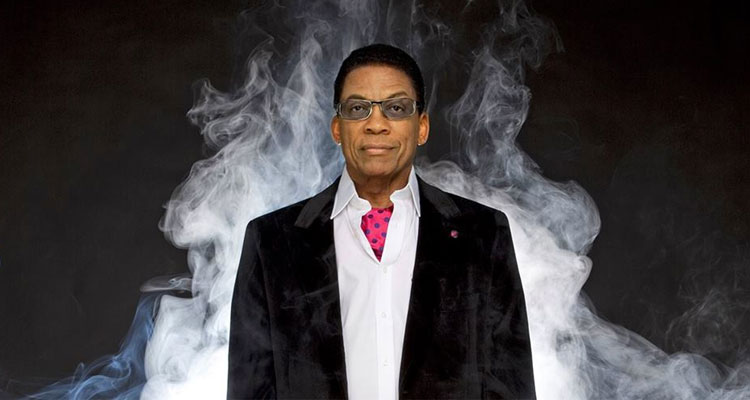One of Earth’s most influential musicians played Milwaukee for the first time in ages on Friday night. Jazz aficionados may have been expecting merely an opportunity to cross Herbie Hancock off their bucket lists, but what they got was much more than just an aging legend going through the motions. Perhaps it’s only fitting that the former child prodigy would retain such impressive skills at age 77, but his performance at the Pabst Theater was nevertheless astounding by any measure. Over the course of an hour and 40 minutes, the history of improvisational music since the 1960s flowed from Hancock’s fingertips, and with a level of vigor and spontaneous creativity that would make most keyboard players’ heads spin.
While Hancock was undeniably the focal point, he has assembled an impressive cast of ringers for this tour. Drummer Vinnie Colaiuta has been a highly sought-after session player since the late ’70s and also toured with some of popular music’s jazziest stars (Frank Zappa, Joni Mitchell, Sting). James Genus currently plays bass in the Saturday Night Live Band and has made the rounds in the New York City jazz scene since the ’90s, as well as playing on Daft Punk’s 2013 smash Random Access Memories. (“Twenty-six Grammy nominations,” Hancock noted, “and where is he tonight? In Milwaukee, playing for you.”) The youngster of the group, Terrace Martin, could easily be on track to legendary status as well; the multi-instrumentalist produced the bulk of Kendrick Lamar’s landmark To Pimp A Butterfly record, and has been a driving force in west-coast hip hop for the past decade-plus.
The show began with a lengthy piece of improvisation that’s being referred to on this tour as “Overture.” Hancock led the way in with a spacey synth wash, which the others added to in a gradual build-up of psychedelic noise, crafting one of the night’s most intense crescendos within a matter of a few minutes. It was interesting to hear both Hancock and Martin mess around with vocoder here in The Bon Iver State™, although it wasn’t prominent for most of the evening and was more of an instrumental flourish than a conductor of words. This initial piece seemed to have no intrinsic structure; it swelled and faded a few times before ending in arbitrary fashion, a bizarre but thrilling start to the performance.
“My professional career really started in Milwaukee,” Hancock said while introducing the band. He was referring to a 1960 gig with trumpeter Donald Byrd that proved to be Hancock’s big break, leading to a stint in Miles Davis’ Second Great Quintet just a couple years later. Where he truly made his name, though, was in the fusion era of the ’70s, taking his electric jazz experiments into rock, funk, and R&B realms. The quartet delved into this prolific period of Hancock’s career for most of the set, beginning with “Actual Proof” from the 1974 album Thrust. While notable on record for Hancock’s dizzying work on the Fender Rhodes, he played Friday’s rendition mainly on the grand piano, working in tandem with Colaiuta to a frenzied climax that would prove to be the night’s most powerful peak.
The only recent composition to appear in the setlist was a song called “Secret Source,” which made its debut earlier this year. It was primarily a Hancock/Martin showcase and the night’s most memorable use of the vocoder, but it was the only portion of the show that didn’t completely gel. Colaiuta almost seemed bored for most of it, or perhaps it was a welcome breather for him, as they followed it up with an epic take on the classic “Cantaloupe Island,” the only pre-fusion song of the night and scarcely even recognizable except at the beginning and end of the piece. Martin turned in his wickedest sax solo of the night in this number, which saw Calaiuta taking remarkable rhythmic detours as if daring the other musicians to maintain structure. The interplay between Martin and Hancock as they resolved back into the song proper was utterly delightful, and the conclusion finally brought the crowd to its feet.
Everyone remained standing for the requisite encore of “Chameleon,” perhaps Hancock’s best-known composition. Modern bands like Galactic and Soulive can trace their very existence to this one song, and echoes of it could be heard at every music festival of the past two decades. Hancock strutted around with his keytar, an instrument that’s a visual gimmick in most instances rather than a source of decent music, but in the hands of Hancock, a veritable weapon. The master showed no signs of slowing down at any point in the show; surely time takes its toll, but Hancock is a true inspiration to anyone worried about losing their edge with age.

